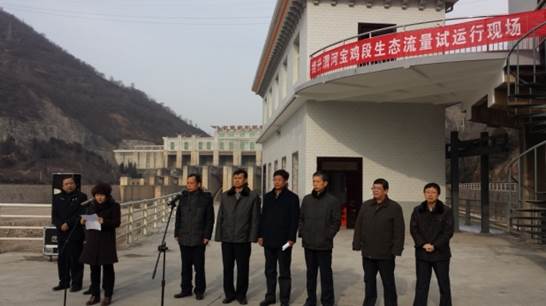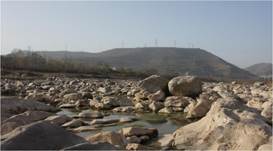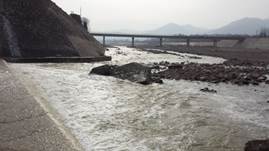Background
To restore the ecosystem of rivers and develop the basin-wide ecological civilization, it is significant to recognize by mechanism, scientifically identify and effectively guarantee the instream eco-environmental flow. In the research and management of instream eco-environmental flow, multiple problems urgently needs to be solved, including the recognition of the natural eco-hydrological base under both natural and social impacts, the identification of eco-environmental restoration targets and eco-environmental flow indicators and the development of ecologically-oriented integrated regulation schemes for river basins and projects. The Weihe River, the largest tributary of the Yellow River, represents the most intense contradiction between human and ecological water demands in the semi-arid and semi-humid areas. Through the case of Weihe River, this study probes into the complex interaction mechanism, quantitative analysis method and integrated regulation technology of instream eco-environmental flow, which is of great theoretical significance and practical value.
Contents
· Investigating the water-ecology-economy dynamic interaction mechanism and developing the coupling simulation model;
· Identifying the natural eco-hydrological base of rivers and analyzing the multi-source disturbance attribution in the context of intense human activities;
· Presenting a holistic analysis of multi-level instream eco-environmental flow based on eco-hydrological zoning; and
· Researching the multiply nested optimal allocation of water resources and integrated regulation of water, ecology and economy.
Achievements
· A water-ecology-economy coupling model (Holistic Model of Economic System and Eco-hydrological Processes, HOMEE) that integrates complex physical, biological and economic factors has been built to simulate the eco-hydrological base and various disturbance scenarios of rivers;
· A quantitative method for hydrological variation attribution of rivers has been introduced based on cooperative game theory to explain and quantify the disturbance of natural variation and human activities to eco-hydrological processes and the responsibility of stakeholders for eco-hydrological evolution;
· An eco-hydrological zoning method has been proposed based on the comprehensive characteristics of water, soil and organism both instream and off-stream, which supports the reasonable layout of control sections for instream eco-environmental flow and the appropriate identification of their functional targets;
· A method of Holistic Eco-environmental Flow Assessment in Semi-arid and Semi-humid Areas (HEFASS) has been put forward, which figured out three levels of eco-environmental flow indicators in the mainstream and tributaries of the Weihe River with well scientific, comprehensive and feasible performance; and
· An ecologically-oriented innovative technology for multiply nested optimal allocation and integrated regulation of water resources in river basins has been developed, and an eco-environmental flow assurance program designed for the Weihe River Basin based on integrated regulation of basin water resources and instream runoff.
Application
The theory and method for holistic eco-environmental flow assessment and integrated regulation of rivers in semi-arid and semi-humid areas have been applied in the dry-season water dispatch of the Weihe River by the State Flood Control and Drought Relief Headquarters Office and the Yellow River Conservancy Commission (YRCC). The three-level indicators of eco-environmental flow in the 24 sections of the Weihe River mainstream and 30 sections of 18 key tributaries have been adopted by YRCC, Shaanxi Provincial Department of Water Resources and Shaanxi Provincial Authority for River and Reservoir Management, as well as cities along the Weihe River. They provide effective support for ecological restoration of rivers in water-scarce areas and have broad prospects for dissemination and application.

Figure 1 Framework of the water-ecology-economy coupling model HOMEE

Figure 2 Distribution of ecological sections of Weihe River based on eco-hydrological zoning


Figure 4 Ecological dispatch testing ceremony in the Baoji section of Weihe River


Figure 5 Ecological dispatch in the Linjiacun section of Weihe River (left: before; right: after)








